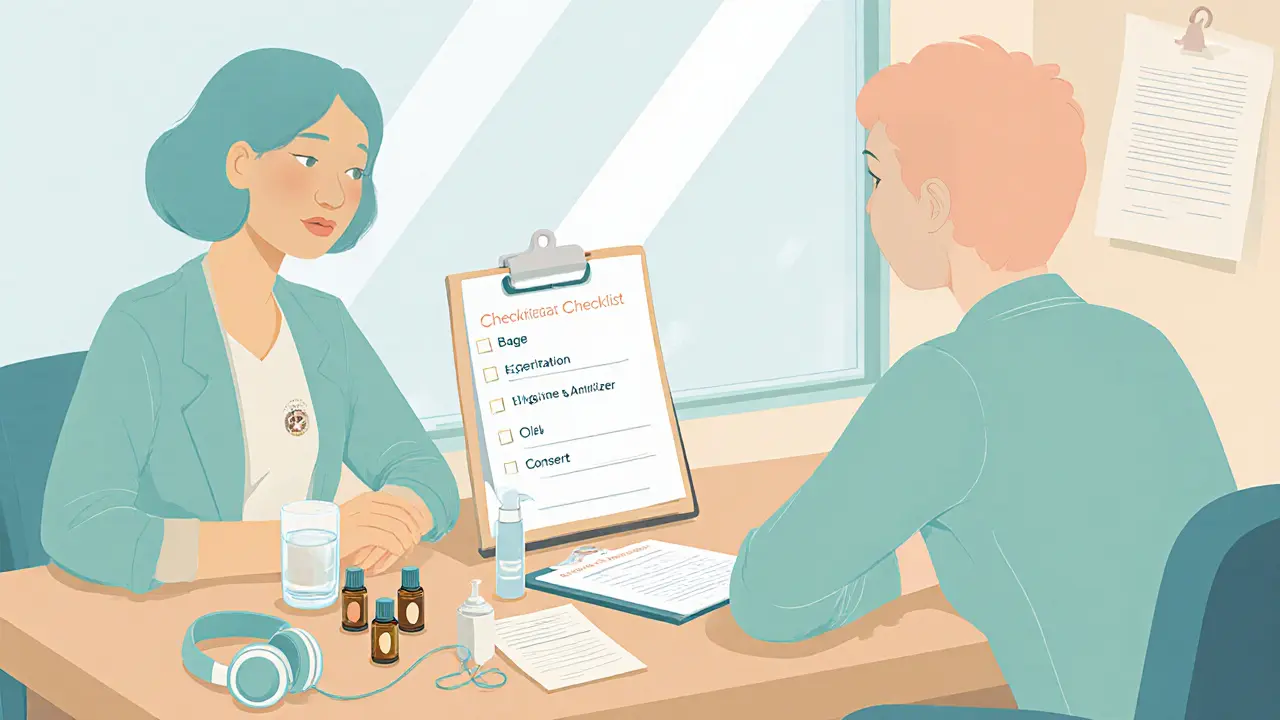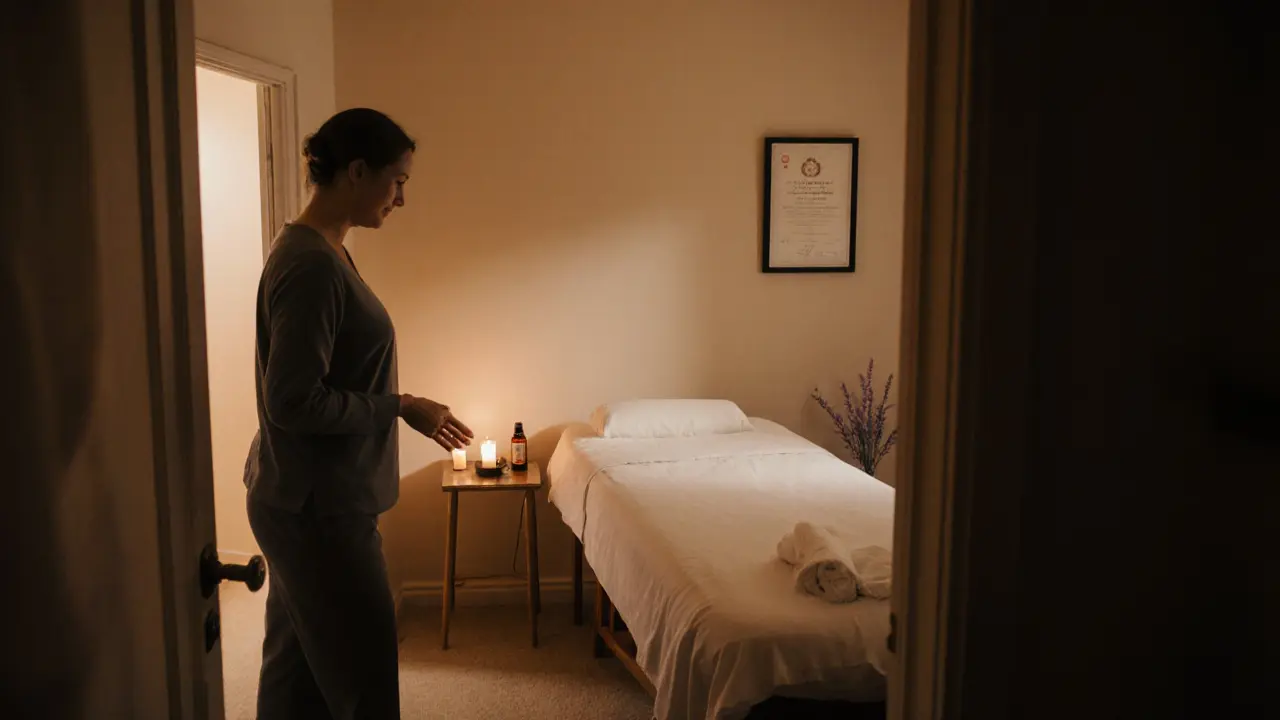Key Takeaways
- Know exactly what to ask, bring and expect before your first private massage.
- Verify therapist credentials, hygiene standards and consent procedures.
- Use the step‑by‑step checklist to feel confident and relaxed.
- Customize the session with aromatherapy, music and pressure preferences.
- Keep safety and boundaries front‑and‑center for a rewarding experience.
Walking into a private massage for the first time can feel like stepping into an unknown room. You want the soothing benefits without any awkward surprises. That’s why a solid private massage checklist is essential - it turns uncertainty into confidence. Below you’ll find everything from history and benefits to a practical, printable list you can follow before you even pick up the phone.
Understanding the Basics of a Private Massage
Origins and History
Massage has been practiced for millennia, from ancient Chinese Tui Na to Roman bathhouse rituals. The modern private session, however, grew out of the European therapeutic tradition of one‑on‑one treatment in the 19th century. Therapists began offering individualized appointments in their own studios, emphasizing personal attention over the communal spa atmosphere.
Core Principles or Components
A private massage hinges on three pillars: Massage Therapist is a certified professional trained in anatomy, technique and client safety, a clean environment, and clear Consent is an explicit agreement on pressure, areas to be worked on and any boundaries. When these align, the body can relax and heal more efficiently.
How It Differs from Public Spa Sessions
Public spas often run multiple tables at once, with background chatter and shared amenities. A private massage offers a dedicated space, tailored pressure, and the freedom to discuss specific concerns one‑on‑one.
| Aspect | Private Massage | Public Spa |
|---|---|---|
| Environment | Single room, personalized ambience | Shared space, multiple tables |
| Therapist Attention | One therapist, full focus | Therapist splits time across clients |
| Customization | Tailored pressure, music, oils | Standard menu, limited tweaks |
| Privacy | High, confidential conversation | Moderate, open areas |
Who Can Benefit from a Private Massage?
Anyone seeking targeted relief-athletes nursing sore muscles, office workers with tension headaches, or anyone simply craving a focused relaxation session-can profit. Because the therapist adapts techniques in real time, the experience suits beginners, seasoned massage lovers and even couples looking for a shared wellness ritual.
Benefits of a Private Massage for Body and Mind
Deep Muscle Relief
With undivided attention, the therapist can locate and treat stubborn knots that a group setting might miss. This deep work improves range of motion and reduces post‑exercise soreness.
Stress Reduction
Research from the National Institutes of Health shows that targeted massage lowers cortisol levels while boosting serotonin and dopamine. The quiet, private setting amplifies these hormonal shifts, leaving you calmer for hours.
Improved Circulation
Gentle strokes stimulate blood flow, delivering oxygen and nutrients to tissues. Over time, this can aid recovery, support skin health, and even benefit cardiovascular function.
Personalized Experience
Because you control the ambience, you can add Aromatherapy Oil is a therapeutic essential oil chosen for scent and therapeutic property of your choice, set the lighting, and pick a playlist of Relaxation Music is soft instrumental tracks that promote calm and focus. These tiny tweaks turn a standard session into a bespoke ritual.
| Benefit | Description | Impact |
|---|---|---|
| Targeted Relief | Therapist focuses on specific tension points | Faster pain reduction |
| Stress Relief | Lower cortisol, higher serotonin | Improved mood |
| Enhanced Circulation | Gentle strokes stimulate blood flow | Better tissue health |
| Customization | Control over music, oils, pressure | Personal satisfaction |
What to Expect When Booking Your First Private Massage
Setting or Context
Most private therapists work from a dedicated studio or a mobile setup that can be arranged in your home. The room should be quiet, comfortably heated, and free of distractions. A clean Massage Table is a padded, adjustable platform designed for therapeutic work with fresh linens is a must.
Key Processes or Steps
- Initial contact - usually via a Booking Platform is an online or phone system used to schedule appointments or direct phone call.
- Pre‑session questionnaire - you’ll share health details, preferences and any contraindications.
- Consultation - therapist reviews the questionnaire, confirms consent, and discusses goals.
- Session - pressure, technique, music and oils are tailored in real time.
- Post‑session notes - therapist may suggest stretches or follow‑up frequency.
Customization Options
Before the massage, you can specify oil scent, desired pressure (light, medium, deep), and even the type of background sounds. Some therapists also offer heated stones or gentle stretching as add‑ons.
Communication and Preparation
Clear communication is the backbone of a safe experience. Mention any recent injuries, skin sensitivities or areas you’d rather avoid. Confirm that the therapist follows rigorous Hygiene is strict cleaning protocols for equipment, linens and hand washing standards - ask about disposable covers and hand‑sanitizer use.

How to Prepare and Follow the Checklist
Setting Up for Success
Choose a quiet time of day when you won’t be interrupted. Hydrate the day before, and avoid heavy meals right before the session. Dress in comfortable, easy‑to‑remove clothing.
Choosing the Right Therapist
Look for certifications from recognized bodies such as the British Association of Massage Therapists (BAMT) or the Federation of Holistic Therapists (FHT). Verify reviews, ask about their specialty (e.g., Swedish, deep‑tissue) and confirm they have liability insurance.
Step‑by‑Step Checklist
- Research therapist credentials and read at least two recent reviews.
- Contact via the booking platform to ask about hygiene practices and consent process.
- Complete the health questionnaire honestly.
- Select preferred oil, music genre, and pressure level.
- Confirm appointment time, location and any required deposits.
- Arrive 5‑10 minutes early; bring a water bottle and a small towel if you prefer.
- Discuss any last‑minute concerns with the therapist before the table is set.
- Enjoy the session, focus on breathing, and give feedback throughout.
- Afterward, drink water, note how you feel, and schedule any follow‑up.
Tips for First‑Timers
- Speak up if pressure feels too intense - the therapist can adjust instantly.
- Keep a mental note of any sensations you enjoy; share them next time.
- Don’t be afraid to ask about the therapist’s training - a professional welcomes it.
Safety and Ethical Considerations
Choosing Qualified Practitioners
Qualified therapists list their credentials, insurance and a clear privacy policy on their website. A quick check with the UK’s Health and Care Professionals Council can confirm registration.
Safety Practices
| Practice | Purpose | Example |
|---|---|---|
| Hand Hygiene | Prevent infection | Therapist washes hands before each client |
| Disposable Covers | Maintain cleanliness | Fresh sheet on the massage table each session |
| Consent Form | Legal and ethical clarity | Client signs a brief agreement on pressure and boundaries |
| Sanitized Tools | Safety for add‑ons | Stones boiled or wiped with alcohol before use |
Setting Boundaries
Discuss clothing preferences, any areas you don’t want touched, and the level of draping you’re comfortable with. Remember, you can stop the session at any time.
Contraindications or Risks
People with open wounds, severe skin conditions, recent fractures, high blood pressure, or certain heart conditions should consult a doctor before booking. A qualified therapist will ask these questions up front.
Enhancing Your Experience
Adding Complementary Practices
Combine the massage with short mindfulness breathing or a warm foot soak. These additions deepen relaxation and extend the benefits.
Solo or Partner Sessions
Some therapists offer duo rooms where couples can receive side‑by‑side treatments. If you opt for a partner, ensure both parties have clear consent and separate therapist attention.
Using Props and Accessories
Consider a heated blanket for extra warmth, or a small pillow to support the neck. Even a simple eye mask can block light and enhance the sense of retreat.
Consistency for Long‑Term Benefits
Regular sessions-once a month for maintenance or bi‑weekly for chronic tension-help sustain muscle health and stress reduction. Track how you feel in a simple journal to see patterns.

Finding Resources or Experts
Researching Qualified Therapists
Start with reputable directories like the BAMT Find a Therapist tool, then verify each candidate’s license number on the official register. Call the studio and ask about their cleaning protocol and consent forms.
Online Guides and Communities
Forums such as Reddit’s r/MassageTherapy and Facebook groups for UK wellness professionals share real‑world tips, therapist recommendations, and etiquette advice.
Legal or Cultural Considerations
In the UK, private massage providers must comply with data protection (GDPR) and health‑service regulations. Be aware of cultural norms-some clients prefer gender‑specific therapists, and many clinics respect that request.
Further Learning Resources
- Book: "The Anatomy of Massage" by John Tripp (2nded.)
- Video series: British Association of Massage Therapists YouTube channel
- Course: Introductory Massage Therapy Certificate - offered by City Lit College
FAQ: Common Questions About Private Massage
What should I bring to my first private massage?
Just a water bottle, comfortable clothing you can easily remove, and any medical information you’re asked to share. You don’t need to bring towels-most studios provide fresh linens.
How long does a typical private session last?
Sessions usually run 60minutes, but 30‑minute “express” or 90‑minute deep‑tissue options are common. Choose length based on your goals and budget.
Is a private massage more expensive than a spa treatment?
It can be slightly pricier because you’re paying for one‑on‑one attention and higher hygiene standards. Expect £60‑£100 for an hour in London, versus £40‑£70 for a shared spa slot.
Can I request a specific type of oil or music?
Absolutely. Most therapists keep a range of Aromatherapy Oils and are happy to play your preferred playlist or a calming instrumental mix.
What if I feel uncomfortable during the session?
Speak up immediately. The therapist is obligated to adjust pressure, stop, or modify the area being worked on. Your consent can be withdrawn at any moment.
Conclusion: Why a Private Massage Is Worth Exploring
A Path to Relaxation and Wellness
When you follow the checklist, the unknown turns into a structured, empowering experience. The focused attention, customizable ambience and professional care combine to give your body and mind a genuine reset.
Try It Mindfully
Book a qualified therapist, run through the steps, and stay present during the massage. Mindful breathing amplifies the physiological benefits and makes the session feel like a mini‑retreat.
Share Your Journey
Did the checklist help you feel more at ease? Drop a comment below, or follow the blog for more wellness tips. Your story could guide someone else taking their first step.
Disclaimer: Some links may be affiliate links, but all recommendations are based on research and quality.

